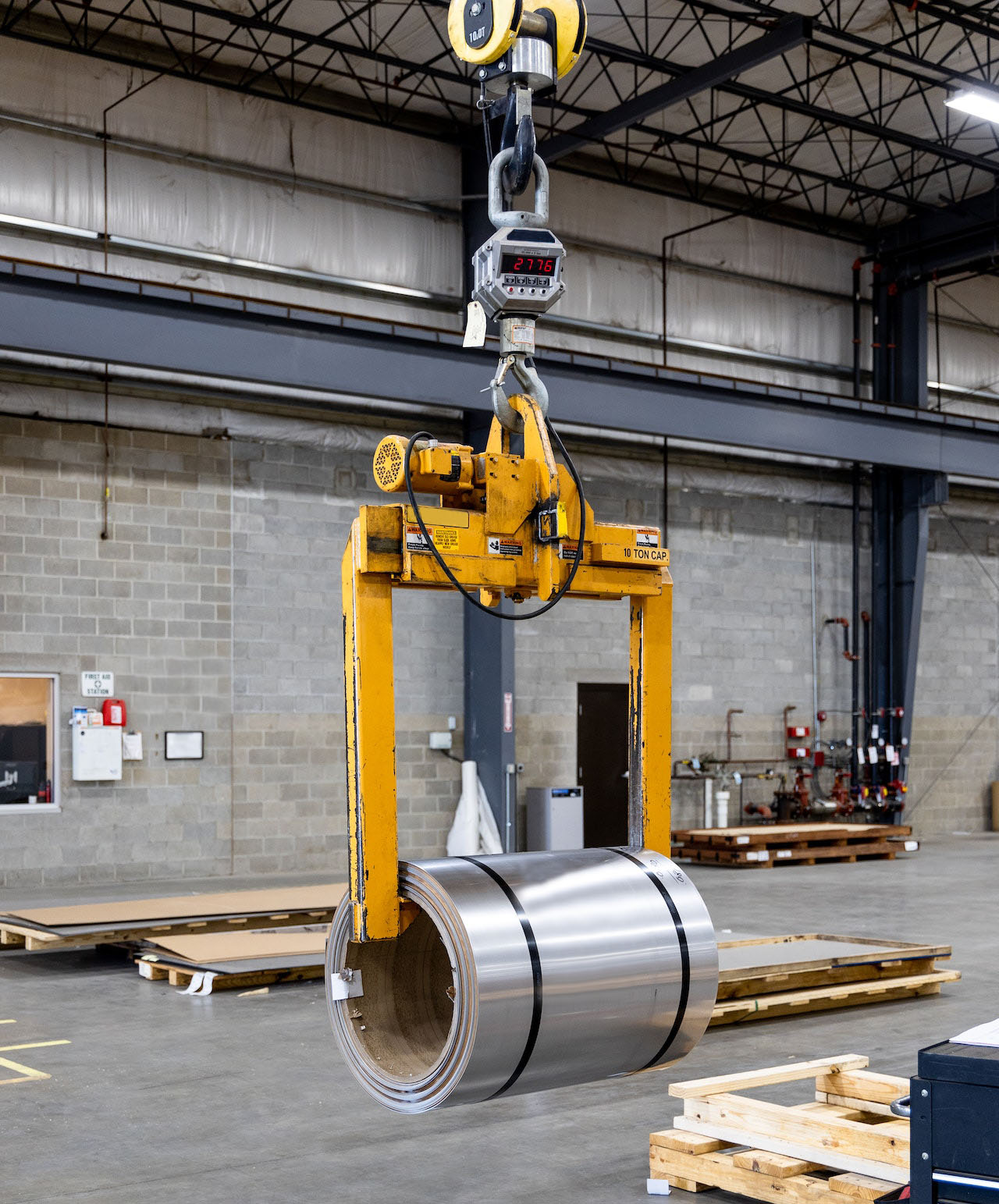Understanding Safety and Design Requirements of Below-the-Hook Lifters
What is a below-the-hook lifting device?
A below-the-hook lifting device (BTHLD) is “a device used for attaching a load to a hoist” (ASME-B30.20). BTHLDs are also called “lifters” and “lifting devices.”
What is not a BTHLD?
Shackles, links, rings, swivels, turnbuckles, eyebolts, hoist rings, rigging blocks, etc. Although these devices are certainly used to connect loads to hoists, these items are not considered to be BTHLDs, but rather detachable rigging hardware.
Benefits and applications
The major benefit of using a BTHLD is that it can increase the efficiency of your lifts, allowing you to make more lifts per shift, and also properly secure the load so that it can be transported safely. All safety standards for BTHLDs can be found in ASME B30.20-2021.
Examples of BTHLDs
There is a large variety of BTHLDs. A few of the most common BTHLDs are:
- Gripping lifter: uses either friction or indentation-causing pressure to hold a load. Tong grabs or clamps utilize a scissor-type action to grip a load.
- Pallet lifter: uses forks to lift pallets from underneath.
- Beam lifter: a load-supporting lifter typically made from structural shapes or fabricated metal, which are suspended from a hoist/crane to provide one or multiple load lifting points for better security and control of the load’s movement.
- Magnetic lifters: used to carry or release flat or round ferrous objects with or without an electrical power supply. They are typically used to lift pipes, plates, slabs, coils, railroad tracks, big chunks of metals, and rings.
- Vacuum lifters: utilize an electric-powered extraction pump and sealed pads to create a vacuum to attach the lifter to an object. Typically used to install large panels of glass such as building facade windows or sheeting material.
Overview of different marking requirements for BTHLDs
All BTHLDs should be marked with the following information:
- Manufacturer’s name and address
- Serial number
- Lifter weight
- Electrical requirements (if applicable)
- Rated load
- Service class
All lifters shall have product safety labels that provide danger, warning, or caution notices to the operators and others against hazards and potential hazards.
Most product safety labels do not contain all the required information; instead, they may have a warning label stating that reading the instruction manual is mandatory to understand all safety aspects and specifications.
In addition, each operating control shall be clearly marked to describe the resulting motion or function of the lifter.
Testing BTHLDs
All BTHLDs shall be tested before they are placed into service. Testing of BTHLDs takes two forms including operational tests and load tests.
Dated reports of all operational and load tests shall be kept on file.
BTHLD maintenance
A maintenance program shall be established based upon the recommendations of the BTHLD manufacturer.
Inspecting BTHLDs
All inspections of BTHLDs shall be done by a designated person. Any deficiencies identified shall be examined and a determination shall be made by a qualified person as to whether they constitute a hazard.
There are three types of inspections for lifters in service:
- Every lift inspection: the operator shall inspect the lifter before each lift for indications of damage, and shall observe the lifter during operation for any damage or anomalies that might occur during the lift. This inspection is not required to be documented and filed.
- Frequent inspection: the operator or other designated person shall inspect the lifter for damage at intervals based upon the severity of the lifter use. Frequent inspections are normally done on a weekly or monthly basis depending on operating services, and are not required to be documented and filed.
- Periodic inspection: the periodic inspection includes all the items checked during the frequent inspections. However, the periodic inspection is required to be documented and filed.
Personnel competence and training
BTHLDs shall be operated only by trained personnel. The operator shall be trained or instructed in the use of the lifter. The operator of the BTHLD shall demonstrate the ability to operate the lifter as instructed before assuming responsibility for using the lifter.
How Walden can help
The key to safely using BTHLDs is to have a plan that is well made, communicated to all, and understood by all, with specific personnel assigned specific duties and responsibilities. EHS professionals at Walden can help you select the best BTHLD and determine a BTHLD compliance plan to best fit your needs. We can also provide training and maintenance programs to ensure your work is meeting all regulations. Contact Walden at 516-758-1273 to connect with an experienced EHS specialist today.

Photo by Rolled Alloys Specialty Metal Supplier: https://www.pexels.com/photo/metal-crane-8972008/
Contact Walden at 516-758-1273 to speak with an EHS specialist about below-the-hook lifting devices and/or any other compliance needs at your facility.
